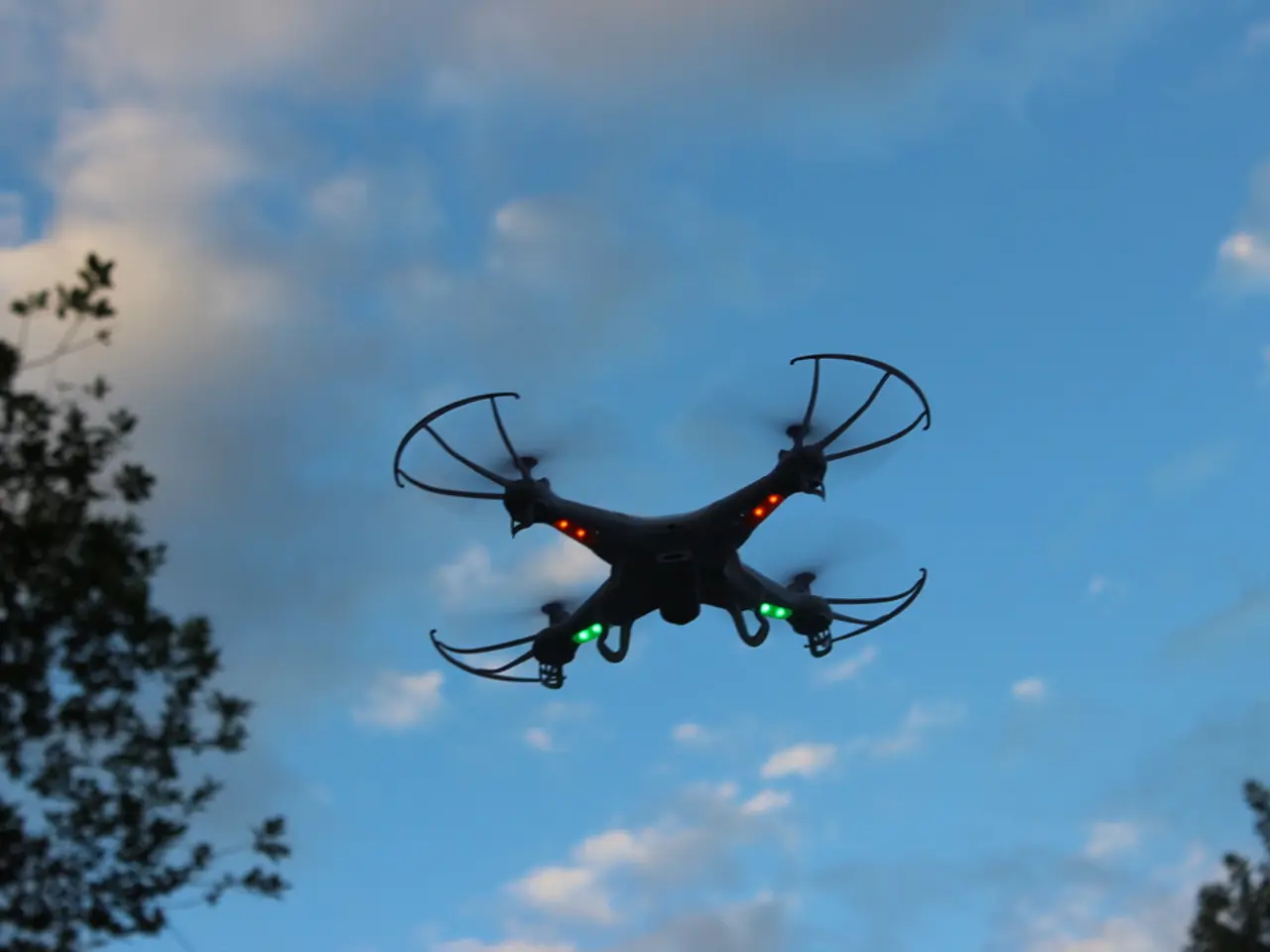Un impeded flight for drones worldwide: Implementing Beyond Visual Line of Sight (BVLOS) operations anywhere on the globe without a signal
In the rapidly evolving world of drone technology, Beyond Visual Line of Sight (BVLOS) operations are proving to be a game-changer. This approach enables drones to operate effectively at scale, transforming various industries and making significant contributions to life-saving, emissions reduction, and efficiency improvements.
The Power of Hybrid Strategy
The most resilient BVLOS operations don't rely on a single link at all. Instead, they employ a hybrid strategy, combining multiple communications paths to ensure that control of the aircraft is never lost, no matter what happens in the sky or on the ground. This approach integrates multiple communication technologies, each serving a different role, and requires intelligent link management.
Satellite Networks Lead the Way
For BVLOS operations, reliable, unbroken connectivity is essential. The Iridium satellite network, chosen because of its low latency and global coverage, is recommended for such operations. In fact, the only truly global, always-on network is in space for many BVLOS missions, with satellite connectivity being the primary link for safe command and control (C2). Common satellite networks for secure and efficient BVLOS flights include Iridium, Inmarsat, and Globalstar, used as primary connections in remote areas without cellular coverage and as backup links when cellular or radio communications fail.
Embracing the Future in Key Sectors
In the offshore energy sector, companies like Skyports are replacing helicopter supply runs with drones, cutting emissions and reducing downtime. Similarly, in the North Sea, offshore wind farms are being inspected in real time without costly, carbon-intensive vessel missions. Long range drone patrols are helping to monitor thousands of miles of remote pipelines, making inspections faster and more efficient.
One of the most impactful applications of BVLOS technology is in the delivery of essential supplies. Drones are delivering chemotherapy drugs to the Isle of Wight eight times faster than traditional transport, potentially revolutionising healthcare logistics. Moreover, BVLOS allows drones to cross oceans, inspect thousands of miles of pipeline, and deliver life-saving supplies to remote communities.
Balancing Responsiveness and Operating Environment
The decision on the type of connectivity for BVLOS operations isn't just about latency or coverage; it's about balancing responsiveness, operating environment, and hardware constraints to select the right orbit for the mission. For instance, terrestrial links are vulnerable to deliberate interference or jamming, and coverage gaps are common in rural and offshore areas. On the other hand, legacy aviation bands like VHF are limited to strict Line of Sight, making them unsuitable for missions that span mountains, forests, or the open ocean.
Regulatory Frameworks and Redundancy
Many regulatory frameworks now encourage or require operators to demonstrate redundancy, often by using two independent communications paths so that a single failure cannot compromise control of the aircraft. This hybrid approach, combining multiple communications paths, is the most resilient BVLOS operations strategy.
Case Study: RockREMOTE Mini OEM
An example of this hybrid strategy in action is the RockREMOTE Mini OEM, a lightweight subassembly easily embedded into a new product or remote IoT solution. This device transmits IoT data using Iridium Certus 100 service via TCP/IP or Iridium Messaging Transport (IMT), ensuring uninterrupted communication for BVLOS operations.
In conclusion, the future of drone technology lies in BVLOS operations, which are transforming industries and making a significant impact on our world. By employing a hybrid strategy that combines multiple communications paths, operators can ensure unbroken connectivity, making drone operations safer, more efficient, and more reliable than ever before.
Read also:
- EPA Administrator Zeldin travels to Iowa, reveals fresh EPA DEF guidelines, attends State Fair, commemorates One Big Beautiful Bill
- Musk announces intention to sue Apple for overlooking X and Grok in the top app listings
- Portugal's EDP dives into bi-directional charging systems, disregarding the absence of a comprehensive regulatory structure in the nation
- Cybertruck's Disappointing Setback, Musk's New Policy, Mega-Pack Triumphs, Model Y's Anticipated Upgrade Prior to Refresh (Week of January 25 for Tesla)




